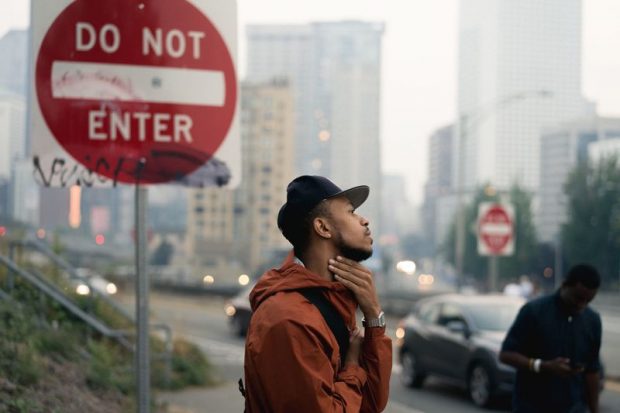Framing Streets Things To Know Before You Buy
Framing Streets Things To Know Before You Buy
Blog Article
Getting My Framing Streets To Work
Table of ContentsSome Ideas on Framing Streets You Should KnowSome Known Questions About Framing Streets.The Best Guide To Framing StreetsLittle Known Questions About Framing Streets.9 Simple Techniques For Framing StreetsThe Ultimate Guide To Framing Streets
, usually with the purpose of capturing photos at a definitive or touching moment by careful framing and timing. https://framing-streets.creator-spring.com/.
Examine This Report about Framing Streets
Susan Sontag, 1977 Road digital photography can concentrate on individuals and their behavior in public. In this respect, the street professional photographer is comparable to social docudrama photographers or photojournalists that also function in public places, however with the objective of catching newsworthy occasions. Any of these photographers' images may record people and building noticeable within or from public areas, which often entails navigating honest problems and legislations of privacy, protection, and property.
Depictions of day-to-day public life create a category in practically every period of globe art, beginning in the pre-historic, Sumerian, Egyptian and very early Buddhist art durations. Art handling the life of the road, whether within sights of cityscapes, or as the leading concept, shows up in the West in the canon of the Northern Renaissance, Baroque, Rococo, of Romanticism, Realistic look, Impressionism and Post-Impressionism.
Framing Streets Can Be Fun For Anyone
Louis Daguerre: "Boulevard du Holy place" (1838 or 1839) In 1838 or 1839 the first picture of numbers in the street was tape-recorded by Louis-Jacques-Mand Daguerre in among a set of daguerreotype sights taken from his studio home window of the Blvd du Temple in Paris. The 2nd, made at the height of the day, shows an uninhabited stretch of road, while the other was taken at concerning 8:00 am, and as Beaumont Newhall records, "The Boulevard, so regularly loaded with a relocating crowd of pedestrians and carriages was perfectly singular, except a person who was having his boots combed.
His boots and legs were well specified, but he is without body or head, due to the fact that these were in motion." Charles Ngre, waterseller Charles Ngre. https://moz.com/community/q/user/framingstreets1 was the first photographer to obtain the technological elegance required to sign up individuals in motion on the road in Paris in 1851. Digital Photographer John Thomson, a Scotsman dealing with journalist and social activist Adolphe Smith, released Street Life in London in twelve month-to-month installations beginning in February 1877
The smart Trick of Framing Streets That Nobody is Discussing
Eugene Atget is considered a progenitor, not because he additional hints was the very first of his kind, but as a result of the popularisation in the late 1920s of his record of Parisian roads by Berenice Abbott, that was influenced to embark on a similar documents of New York City. [] As the city established, Atget assisted to promote Parisian streets as a worthwhile topic for digital photography.

Getting The Framing Streets To Work
The principal Mass-Observationists were anthropologist Tom Harrisson in Bolton and poet Charles Madge in London, and their very first record was created as guide "May the Twelfth: Mass-Observation Day-Surveys 1937 by over two hundred viewers" [] Window cleaner at Kottbusser Tor, Berlin, by Elsa Thiemann c. 1946 The post-war French Humanist School photographers found their topics on the road or in the restaurant. In between 1946 and 1957 Le Groupe des XV yearly exhibited job of this kind. Andre Kertesz. Circus, Budapest, 19 May 1920 Street digital photography formed the major content of 2 exhibits at the Gallery of Modern Art (Mo, MA) in New York curated by Edward Steichen, Five French Professional Photographers: Brassai; Cartier-Bresson, Doisneau, Ronis, Izis in 1951 to 1952, and Post-war European Digital Photography in 1953, which exported the idea of road photography internationally.

Get This Report on Framing Streets
The recording device was 'a surprise camera', a 35 mm Contax concealed below his layer, that was 'strapped to the chest and linked to a long cable strung down the right sleeve'. His job had little modern effect as due to Evans' sensitivities concerning the creativity of his task and the personal privacy of his topics, it was not published until 1966, in the book Several Are Called, with an intro composed by James Agee in 1940.
Helen Levitt, then an educator of young kids, linked with Evans in 193839. She recorded the temporal chalk illustrations - Lightroom presets that belonged to youngsters's road society in New York at the time, as well as the kids who made them. In July 1939, Mo, MA's new digital photography area consisted of Levitt's work in its inaugural exhibitionRobert Frank's 1958 book,, was substantial; raw and commonly out of emphasis, Frank's images examined conventional digital photography of the moment, "challenged all the formal policies set by Henri Cartier-Bresson and Walker Evans" and "contradicted the wholesome pictorialism and heartfelt photojournalism of American magazines like LIFE and Time".
Report this page